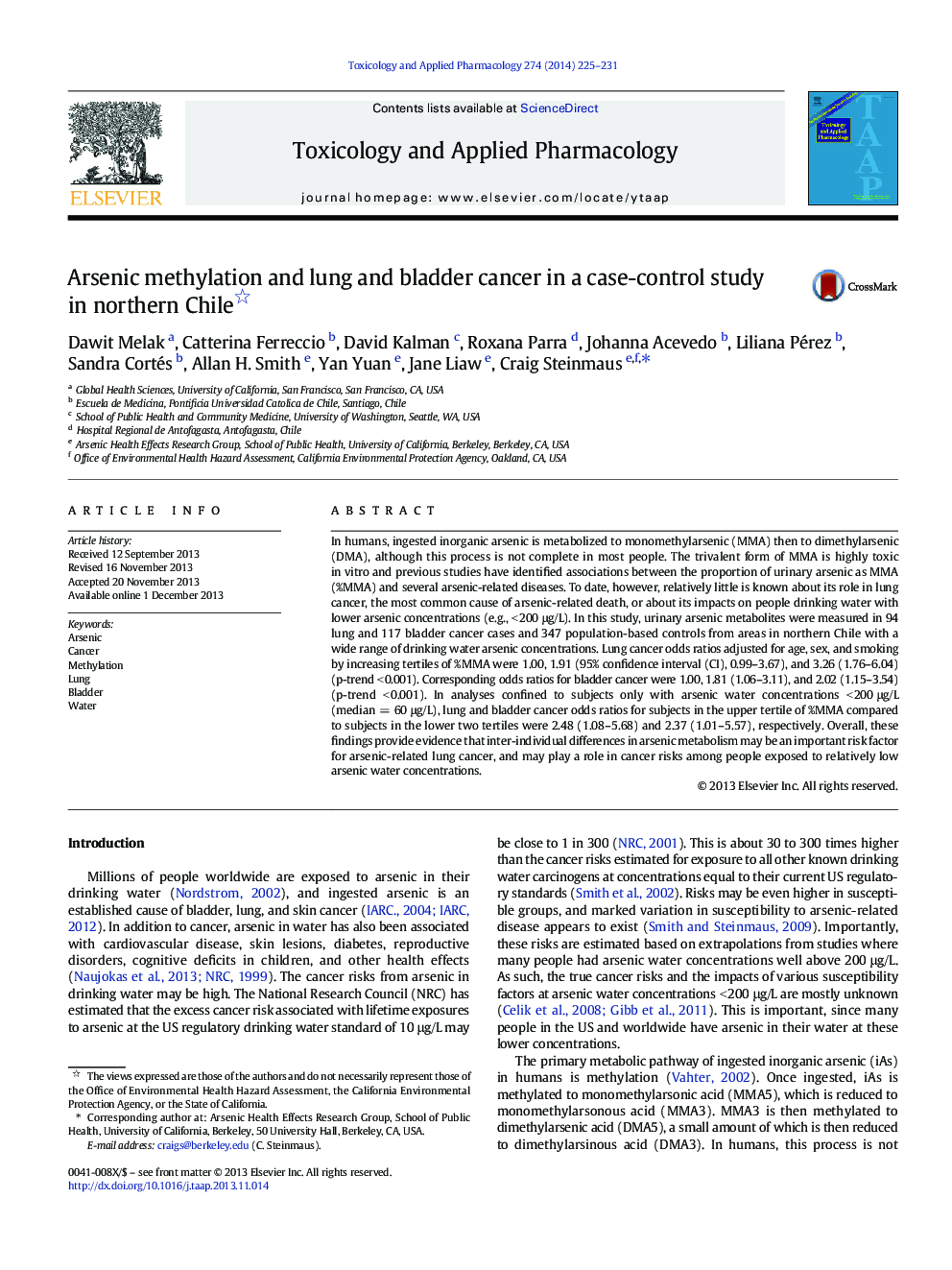| Article ID | Journal | Published Year | Pages | File Type |
|---|---|---|---|---|
| 5846334 | Toxicology and Applied Pharmacology | 2014 | 7 Pages |
Abstract
In humans, ingested inorganic arsenic is metabolized to monomethylarsenic (MMA) then to dimethylarsenic (DMA), although this process is not complete in most people. The trivalent form of MMA is highly toxic in vitro and previous studies have identified associations between the proportion of urinary arsenic as MMA (%MMA) and several arsenic-related diseases. To date, however, relatively little is known about its role in lung cancer, the most common cause of arsenic-related death, or about its impacts on people drinking water with lower arsenic concentrations (e.g., < 200 μg/L). In this study, urinary arsenic metabolites were measured in 94 lung and 117 bladder cancer cases and 347 population-based controls from areas in northern Chile with a wide range of drinking water arsenic concentrations. Lung cancer odds ratios adjusted for age, sex, and smoking by increasing tertiles of %MMA were 1.00, 1.91 (95% confidence interval (CI), 0.99-3.67), and 3.26 (1.76-6.04) (p-trend < 0.001). Corresponding odds ratios for bladder cancer were 1.00, 1.81 (1.06-3.11), and 2.02 (1.15-3.54) (p-trend < 0.001). In analyses confined to subjects only with arsenic water concentrations < 200 μg/L (median = 60 μg/L), lung and bladder cancer odds ratios for subjects in the upper tertile of %MMA compared to subjects in the lower two tertiles were 2.48 (1.08-5.68) and 2.37 (1.01-5.57), respectively. Overall, these findings provide evidence that inter-individual differences in arsenic metabolism may be an important risk factor for arsenic-related lung cancer, and may play a role in cancer risks among people exposed to relatively low arsenic water concentrations.
Related Topics
Life Sciences
Environmental Science
Health, Toxicology and Mutagenesis
Authors
Dawit Melak, Catterina Ferreccio, David Kalman, Roxana Parra, Johanna Acevedo, Liliana Pérez, Sandra Cortés, Allan H. Smith, Yan Yuan, Jane Liaw, Craig Steinmaus,
